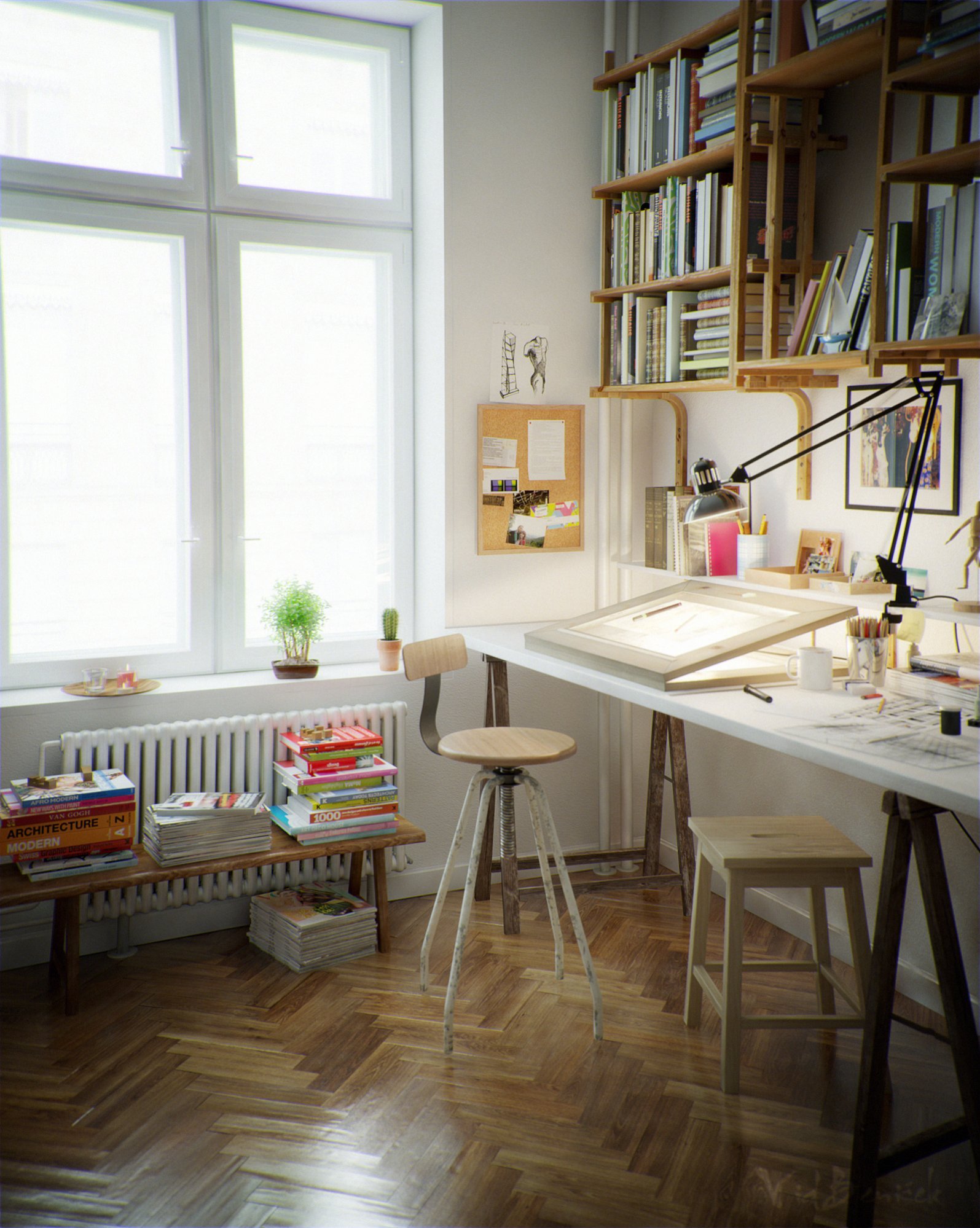"But I'm an artist!" - 7 tips for how even the most creative people can embrace minimalism
How does an artist embrace minimalism, while still collecting all the materials that are an integral part of inspiring new designs? This question spawned a list of tips for how artists can embrace minimalism without hampering the creative process. This post was inspired by a conversation with Mariele Ivy, the genius behind the jewelry brand, Young in the Mountains which creates the most beautiful rings out there. Be sure to check out her work, all handmade and conscious of the environment from which her jewels are drawn.
First, let’s understand the artist’s narrative:
“Random, collected materials inspire the art and that I can't predict when inspiration will strike, or with what material. So I need to keep everything that inspires me, despite the clutter it creates.”
So even while working within the artist narrative, at New Minimalism we have found that it is possible to set boundaries in order to maintain a studio space that supports your highest work.
Image of Mariele of Young in the Mountains in her studio, by Kim Branagan.
7 TIPS TO EMBRACE MINIMALISM, Even AS AN ARTIST
Give yourself physical boundaries –
Designate a bin (or 3) for all the "inspiration" materials that you are not actively using in a project. When the lid to said container(s) starts to become hard to close, it's time to purge.
Remember, there are only 24 hours in a day
it’s common for us to hear from a creative that they have "time management" issues. It's a helpful reminder that there are only 24 hours in a day, and time is finite. Be realistic with how much time you have to root around, inspiring new designs, vs. create the items that are already in the queue...aka the "to-do" list. Use a timer to help strengthen the time management muscle (we could all use this). We often don't realize exactly how long a task will take, especially when you are in that ideal flow state, so it's helpful to have the electronic-assist. For example, if you have just 1 hour to create/do/play with item x, set the timer for 1-hour and get busy. You'll be surprised at how quickly that timer will ding. This starts to train your brain to know how long certain things take, you can start to be more realistic with your time.
Give yourself date boundaries
Using that same container method, slap a label on the container that says something like (use by Oct 2022). If Oct 2022, comes and goes you haven't opened that box or looked at those items, those items should be removed to make space for new inspiration. Pro tip, remove the items blindly. If you open the container and start to rummage, you are sure to decide that everything needs to stay.
Honor the ebb and flow of materials
Rather than cling to any and everything that comes your way, honor that things comes and things go from your life. There is a bit of trust involved in this. But when you open up in this way, you allow space for new items to come in with regularity that can provide a fresh perspective, rather than be stuck in old thought patterns and familiarity.
What is your ideal "creation state"?
Some artists love having a messy studio and are most alive sifting through tons of materials in the creation process. Others need to start with a blank slate, and an orderly space in order to generate new ideas. I personally, am a little bit of both -- I need to start with a clean slate, during my creation process it gets super wild and messy, and at the end, I need to clean up. If I don’t clean up and put things away, I feel like the creation is not complete, or never-ending, and that is a drain for me, mentally and creatively. If you like to cook, the kitchen is a great test bed for your creative process.
There is always a reason to keep something.
We have heard the most creative reasoning behind why an item should be kept. And while it's a fun mental exercise of finding a use out of something that looks, well useless, it's also a surefire way to keep your space cluttered.
Yes, it’s true…
You may miss something after you've gotten rid of it. And if that happens, it’s ok. It's the fear of even encountering that emotion of missing something that prohibits us from letting go in the first place. Walk your edge and move out of your comfort zone. That's where the growth is.
For all the artists out there who struggle with creating order in the studio, write down a few of these tips that resonate most with you, in your own hand and own words, and post them somewhere visible in your studio.
Thank you, Mariele, for inspiring this post!
And don't’ forget, creativity thrives within constraints.



